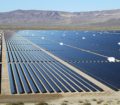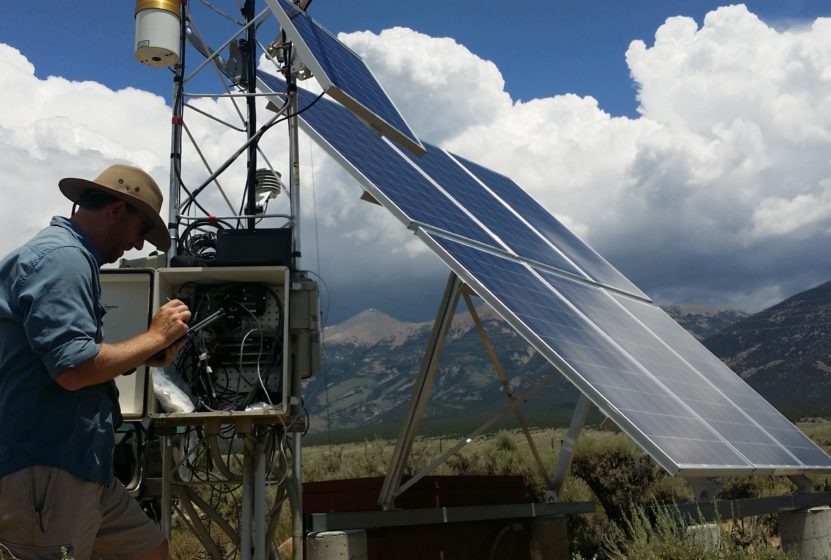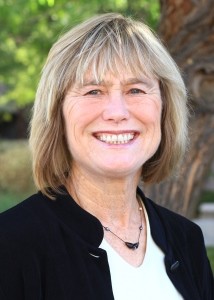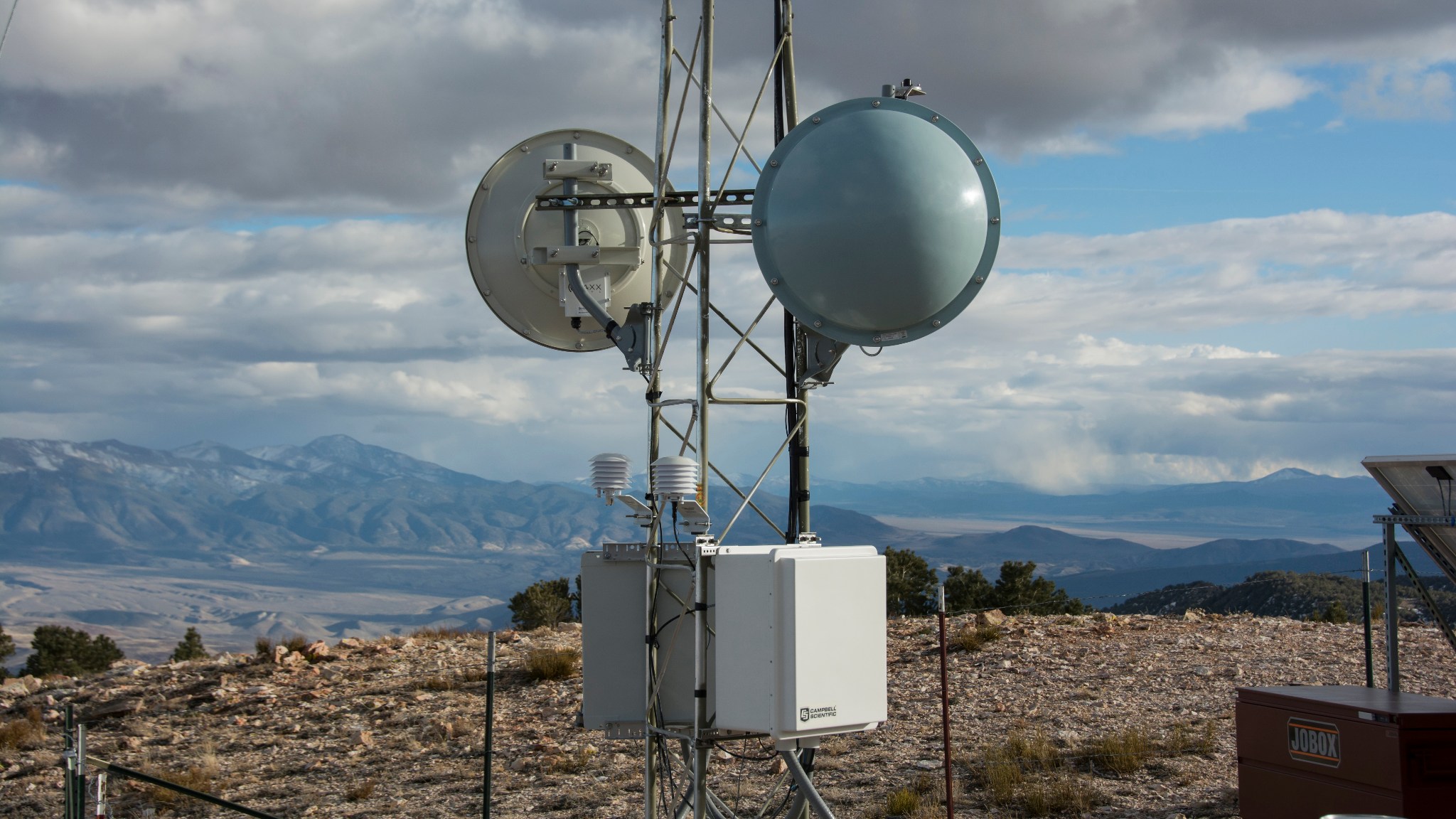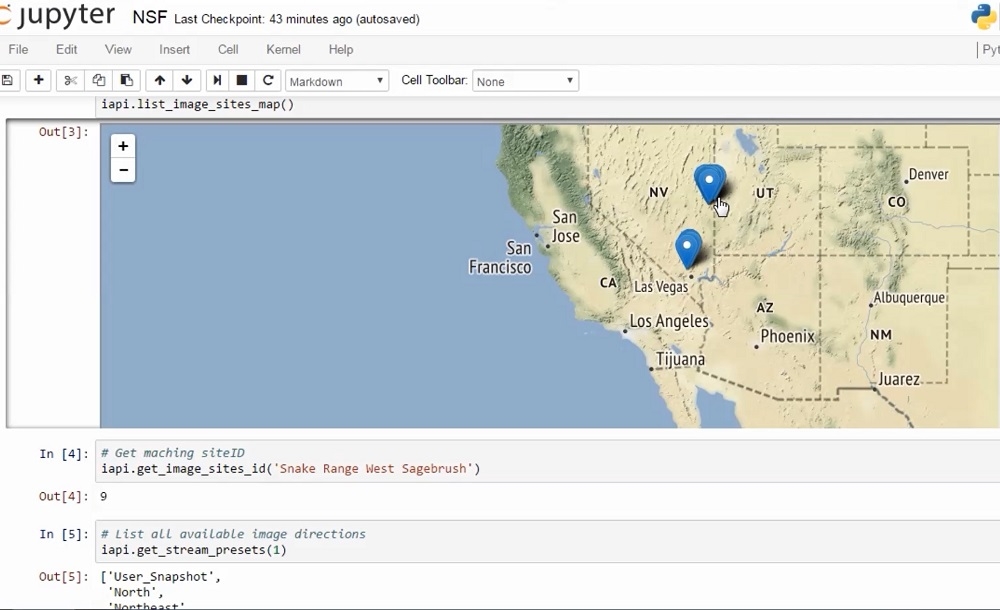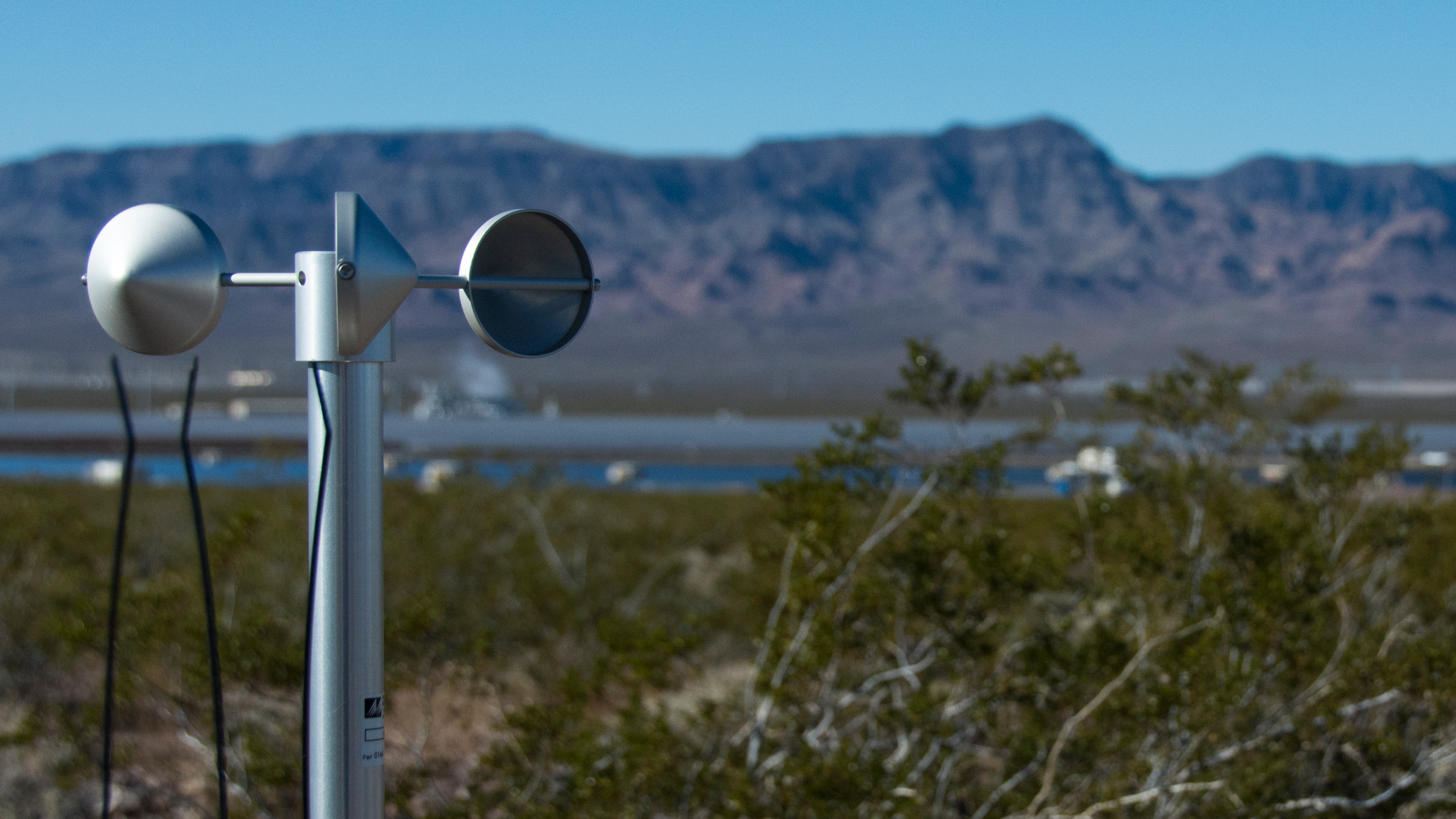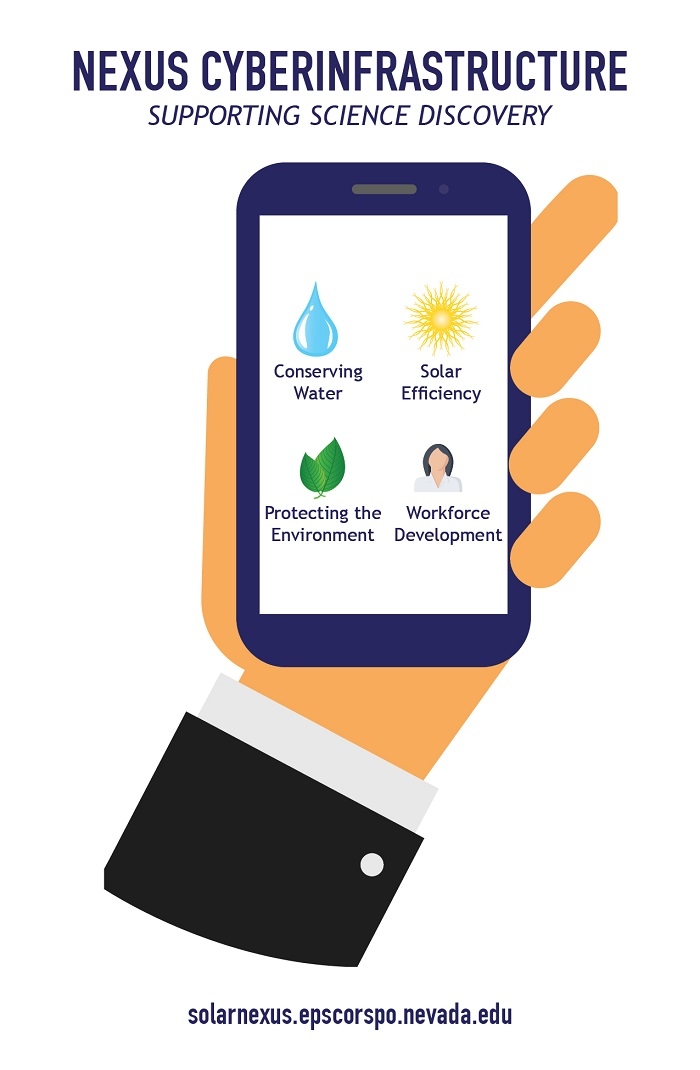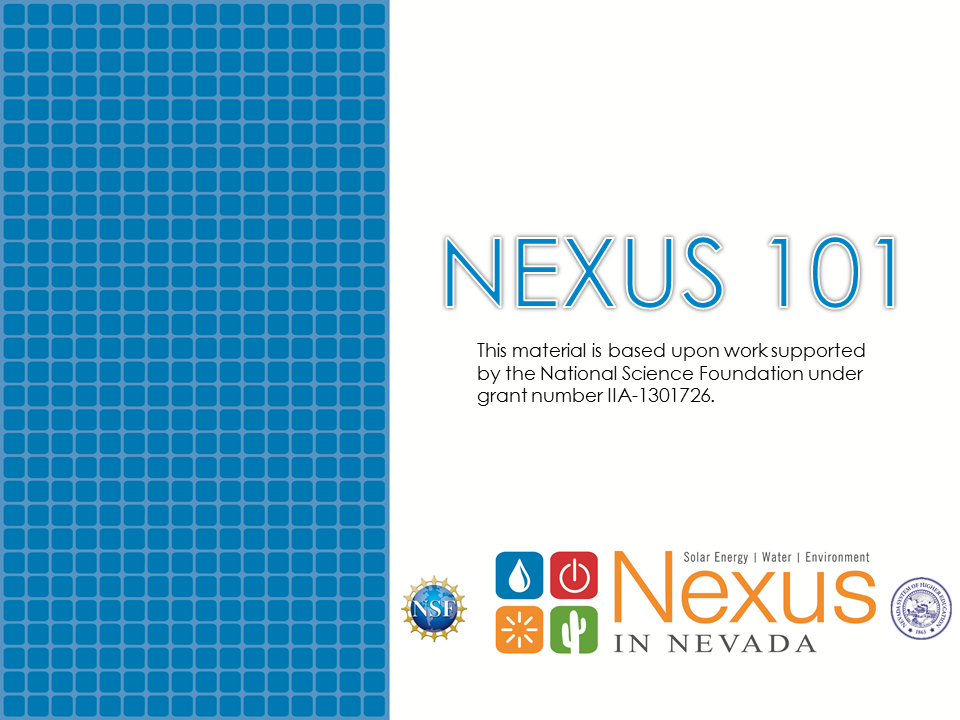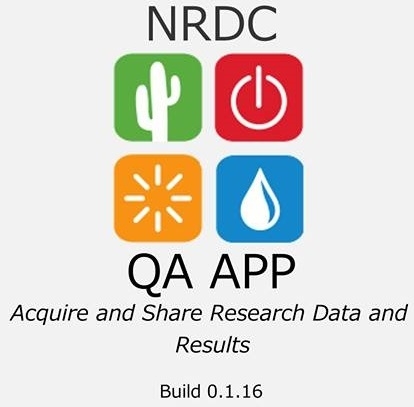How technicians record data after the App, Scotty Strachan, Technician, University of Nevada, Reno –Scotty Strachan Photo
Letter from the Director
Advanced information technology systems, or cyberinfrastructure (CI), are used to tackle far more complex problems in science and society than previously possible.
In this issue of the NEXUS Newsletter you will read about how our NEXUS scientists and students are creating a new archetype for CI research and development in Nevada that could potentially serve as a model for national CI efforts. The NEXUS research highlighted here includes the Nevada Research Data Center, which provides a CI foundation for the NEXUS project; new cybersecurity methods for the electrical grid; innovative methods to store and process Big Data; and more efficient ways to transfer and store data.
The advanced CI innovations described here contribute to the National Science Foundation’s (NSF) “Harnessing Data for the 21st Century” – one of NSF’s nine big ideas to shape the future of science for the next few decades.
As always, we welcome future collaborations and partnerships and look forward to hearing back from you!
Sincerely,
Dr. Gayle Dana
|
RESEARCH HIGHLIGHTS
|
Creating the Framework for Gathering, Processing and Sharing Scientific Data
The cyberinfrastructure data transport network allows field scientists to make connections between equipment, database systems, the internet, and each other. –Scotty Strachan Photo
In the NEXUS research projects scientists continually gather data, which they then need to process and analyze. The NEXUS Cyberinfrastructure (CI) provides the framework to support this research and CI scientists build the tools for data management and processing that are used by field and lab researchers. Once scientists have collected the information in the field, the network transmits the data to the Nevada Research Data Center (NRDC), which is based at the University of Nevada, Reno (UNR) with an associate computing facility at the University of Nevada, Las Vegas (UNLV). In addition to providing a foundation for the NEXUS project, CI is increasing Nevada’s cyber capabilities for interdisciplinary research and education by developing advanced tools for data visualization, mining, and security. In early 2016, the NRDC joined the Data Observation Network for Earth (DataONE), a National Science Foundation funded Earth and environmental data sharing program. DataONE curates data, provides data management and analysis tools for the greater scientific community. “Cyberinfrastructure’s goal is to support, facilitate, and accelerate high quality research and education,” says NEXUS scientist Dr. Sergiu Dascalu, at UNR. “Our CI project is important because it develops capacities that we didn’t have in the past in Nevada.”
Ensuring Security in the Electrical Grid
Kenny Tong, Shutterstock.com
As the interconnectedness of the electrical grid becomes more extensive and complicated, its vulnerability to cyber attacks also increases. Grid information is vulnerable not just to cyber attackers but also to collaborators who could potentially use that data for competitive advantage. To protect an organizations data, it would be ideal that no other individual were able to view that data. To this end, NEXUS scientist Dr. Mehmet Gunes at UNR has developed a technology that relies on current hardware-based security, the Trusted Platform Module (TPM) chips that were originally built into computers to prevent illegal downloading of music or videos and ensure copyright rules. Gunes’ team uses these TPM chips to protect individuals or organizations, enabling them to safely exchange information with collaborators that also compete. Although the team’s model is designed for use in the power grid, the architecture could have applications in other domains. “What I find exciting is that you can adapt this to the cloud, you can adapt this to medical domain, or any other system that needs to share sensitive information,” Gunes says. “It can be used for privacy protection in general.”
Improving the Performance of the Big Data Industry
NRDC University of Nevada, Las Vegas Programming Interface –S. Dascalu Photo
Large photovoltaic (PV) solar arrays used in solar energy facilities block rainwater from reaching some areas of the soil, while As the amount of data being collected in business and computing environments has soared, scientists have created frameworks such as Hadoop to provide storage for large datasets and the necessary power for large scale data processing. The heart of Hadoop is the programming model MapReduce which orchestrates the processing of data by running various tasks in parallel and managing all the data transfers between the various parts of a system. NEXUS scientist Dr. Ju-Yeon Jo at UNLV is investigating techniques to improve on this model and is currently exploring a new concept called Deep Data Locality, with the goal of yielding savings in processing time, cost and energy on a global scale. To this end, Jo’s team has developed algorithms and a software library, which will be contributed to the Hadoop user community. The team is also planning to build a large-scale Hadoop infrastructure for their research use and for hands-on data science education. “Currently there are few large-scale practical Hadoop infrastructures that students can access and practice in the academic environment,” Jo says. “Students generally touch only the surface of the Hadoop system and rarely acquire enough knowledge needed for handling big data in real world.”
Data Compression Methodology for Efficient Information Processing
Remote monitoring and data collection –S. Strachan Photo
Each day thousands of NEXUS sensors record climate and environmental data at various points in Nevada creating voluminous information that needs to be transferred, processed and stored. To create the necessary infrastructure for scientists to quickly access this data, NEXUS scientist Dr. Shahram Latifi, at UNLV has developed a data compression technique that reduces the amount of information that needs to be transferred and stored. Latifi’s methodology loses no information in the compression process but reduces the volume of data by a factor of eight. Latifi also focuses on increasing the speed of data transmission from the field to scientists, or between scientists, by making modifications to the underlying network protocols. Latifi’s research ensures that such high-speed communication is as secure as possible: His team uses algorithms to identify security breaches and block potential threats and improved network protocols that allow different layers of security for data transmission. “When you can send gigabytes of information in a blink of an eye or when you can compress data by a factor of two or three more than the existing methods, it’s exciting,” Latifi says. “The fact is that you can save so much storage and communication time.”
|
NEXUS AT A GLANCE
|
Take NEXUS 101 – Click Here
|
NEXUS 101
|
How Can a Cyberinfrastructure App Support NEXUS Research?
On several NEXUS field sites, automated instruments collect climatic data as well as information about water balance and plant health. Installation and maintenance notes for these sensor systems need to be recorded for Quality Assurance purposes. To improve on the current process of recording such information in a log book and then transferring a day’s information into a digital file, NEXUS students have designed an app for the Android mobile platform for gathering such data in the field. Field scientists and technicians can use the app to enter information in a uniform manner, and it is then automatically uploaded to a central site.
Any opinions, findings, and conclusions or recommendations expressed in this material are those of the author(s) and do not necessarily reflect the views of the National Science Foundation.
If you would like to know more about the NEXUS project, please contact,
Dr. Gayle Dana
Gayle.Dana@dri.edu
530-414-3170

